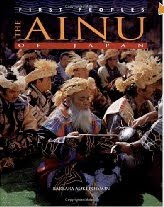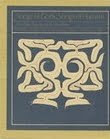
I am a newborn bear kamuy.
It is dark and warm in that space, and it is filled with Mother’s smell. I am absorbed in sucking her milk. Then, just as I am about to doze off, I hear a sound from a long way away. It is getting closer.
“What is it, Mother?”
“It’s the noise dogs make.”
“Dogs? Are they scary?”
Mother doesn’t move a muscle. Nor does she answer. But suddenly the snow caves in and a small hole opens up in the snow wall. A single beam of light shines straight through the hole, like a pole reaching toward us. The light reaches my mother and I see her face for the first time. It is shining.
“Everything’s going to be fine, child. Stay right here.” She rises from my side and walks straight into the light. The furry edges of her massive body sparkle like gold.
As Mother stretches to peer through the hole in the wall of snow, I hear a twang.
“Oh!” Slowly she spreads out her arms. Then, quite suddenly, she falls heavily onto her back.
“It’s a clean hit!”
The wall of snow crumbles and sunlight fills the space. White. It’s blinding white. The space is filled with blinding white light. Red. There’s red. Red is sprouting from my mother’s eyes. It spills and spreads all over the white snow.
The dogs are making a furious noise.
“It’s a female. She’s got a cub.”
A huge hand reaches toward me. I smell the smell of humans for the first time.
****
I am an Ainu boy.
Father is sitting by the hearth carving wood when his hand goes still. He is listening to something. A smile spreads under his thick beard.
“It’s raining,” he says. “It’s the bear cub-cleansing rain.” Today the fierce cold has loosened its grip. Instead of snow, a soft rain is falling.“When it begins to rain like this, there’s sure to be a newborn bear cub in the den.”
“The bear’s den? You mean the one in the mountain?”
“That’s right. The den you and I discovered together at the end of last autumn.”
Last year we found the entrance to a bear’s den by the root of an enormous tree. It was in the middle of a forest ablaze in autumn reds and yellows. Now, that same forest is certain to be under a blanket of snow. Father brings out his bow and arrows, and begins to dab wolfsbane on the tips of the arrowheads.
“This is powerful poison,” he says. “It will quickly kill the largest of bears, before it can even take its next breath.
The next morning, the fearsome cold has returned and the world seems to sparkle as though it has been scattered with stardust. Everything is frozen solid. Even the snow in the forest, which I usually sink into up to my waist, has hardened like bone. I could have walked on its surface for miles without sinking into it.
“We’re going to the mountain to welcome the Kimun Kamuy, the mountain god,” Father says. He means there’s going to be a hunt!
“Take me with you!”
“No, no. Tonight we’ll spend the night in the mountains. A boy like you, not even big enough to catch a rabbit, would just get in the way.” Father fastens on his snowshoes and takes hold of his walking stick. Slinging his bow and arrows across his back, he turns toward the mountain, his face aglow. The dogs follow, leaping and hopping in excitement.
I watch as the men enter the woods, their breath making white puffs in the air. Stamping my feet to keep them warm, I watch until I can no longer see them.
***
Father does not return home that day. Or the next day, or the next. Outside I can see the triple stars glittering high above in the frozen night sky. I know that the stars are the hearth fires of heaven. I wonder if Father is looking up at them like I am.
“I hope he’s all right,” I murmur.
Mother sits by the hearth, rocking the baby’s cradle. “Of course he’s all right. The fire kamuy is watching over him,” she says in her musical voice.
In the hearth the burning wood makes popping noises and the flame swells upwards. Suddenly the howling of dogs rises from the far distance. I dash outside, and I see Father and the men walking toward the village on the moonlit path. The fruit of their hunt is slung over their shoulders. There are humps on their backs as big as hills. It makes them look like a troop of magnificent bears marching down to earth from heaven.
“Look what Kimun Kamuy has seen fit to give us,” Father says. Reverently he sets down a huge bundle of meat and a bear skin larger than any I’ve ever see before. Then he opens up the front of his shirt and draws out a small animal.
“It’s a bear cub!” I shout.
But Mother reaches for the cub before I can. “Oh you sweet little thing. You must be so cold. You must be so frightened.” She takes the bear cub firmly in her arms and lets it suckle at her breast.
“It’s still a baby,” I say.
“That’s right. Her eyes have only just opened,” Father replies. “But as tiny as she is, she’s a true Kimun Kamuy. She’s an honored guest that has come to us from the land of the gods.”
I am a little scared, but I peer at the bear cub. I smell the smell of bear for the first time.












